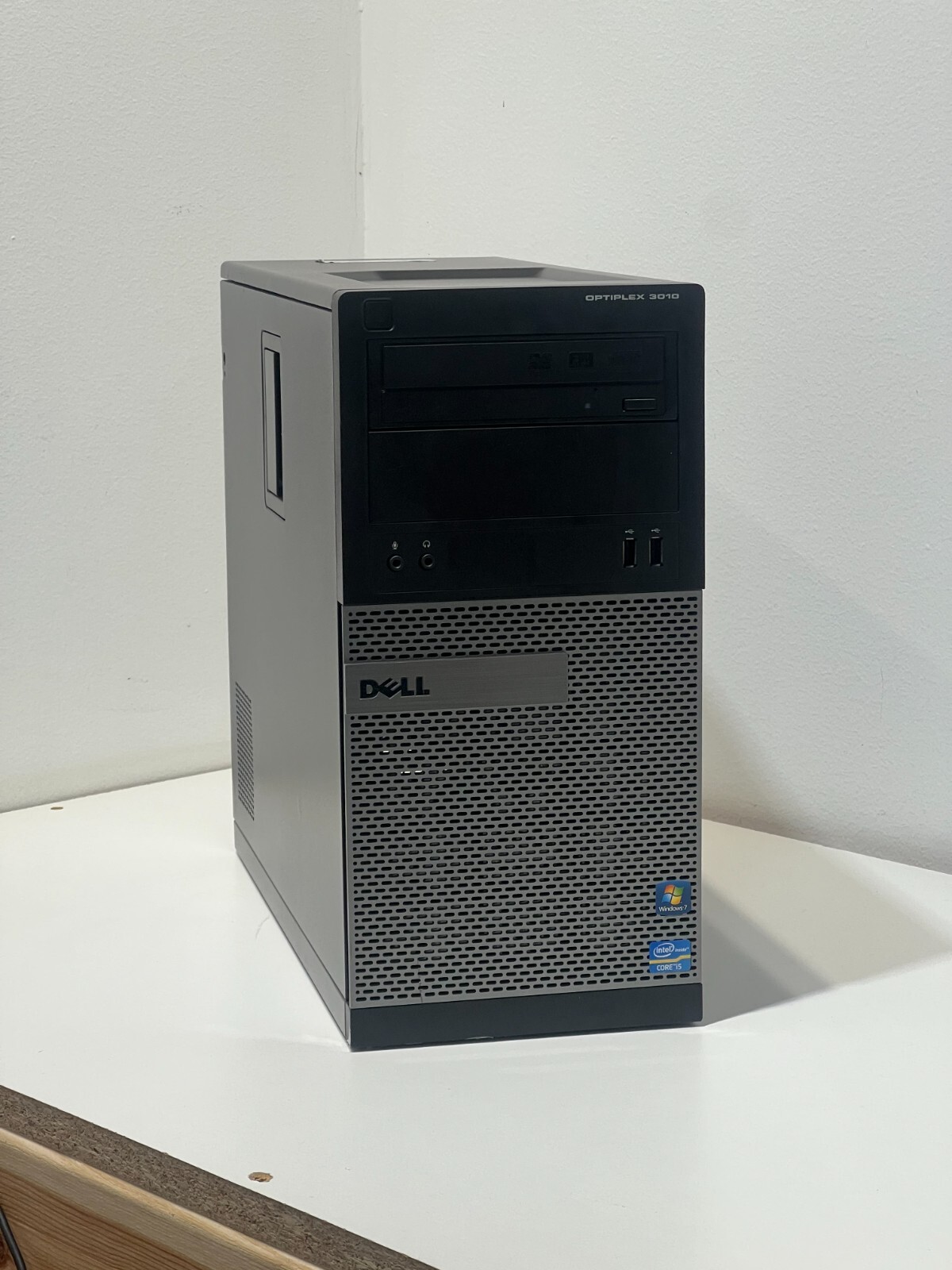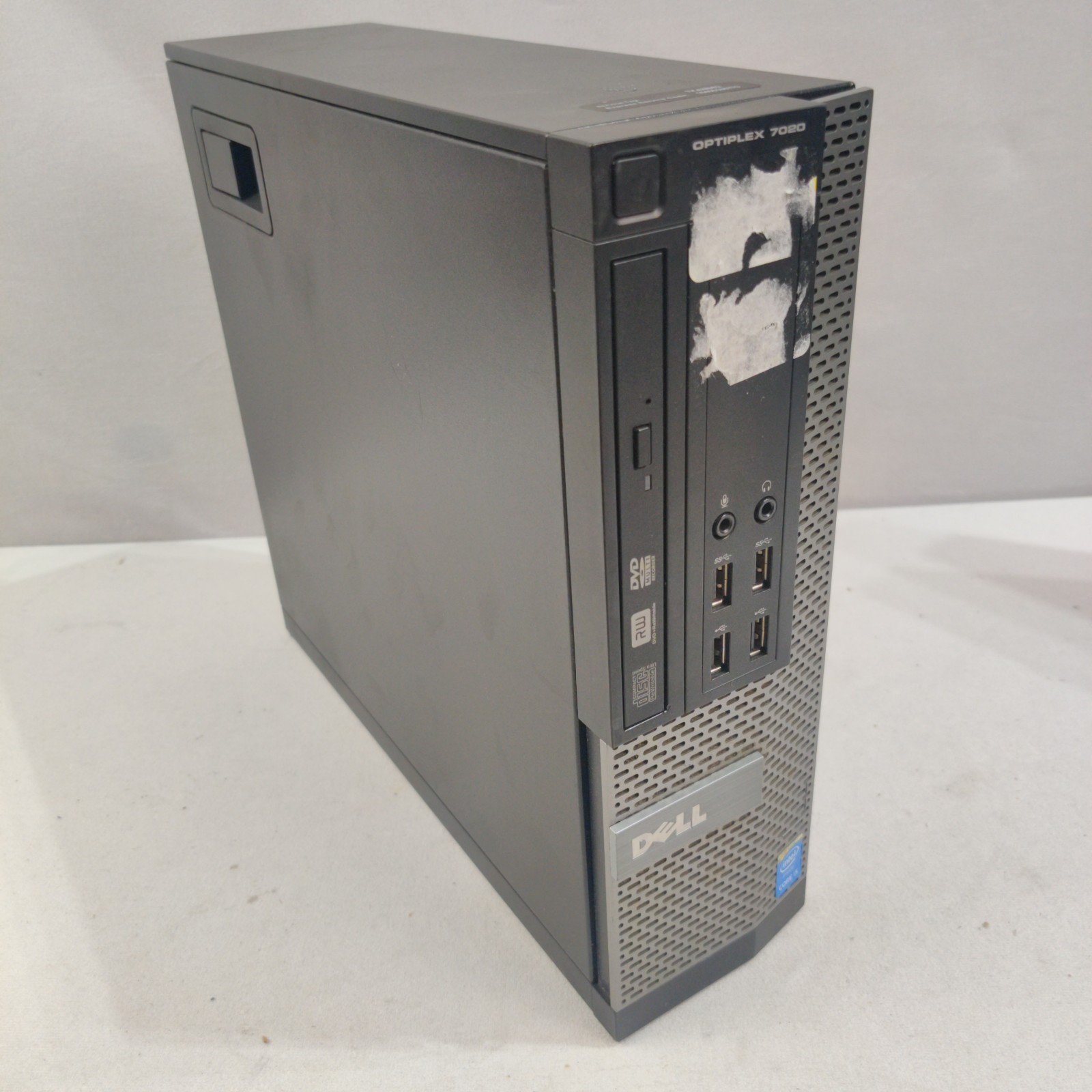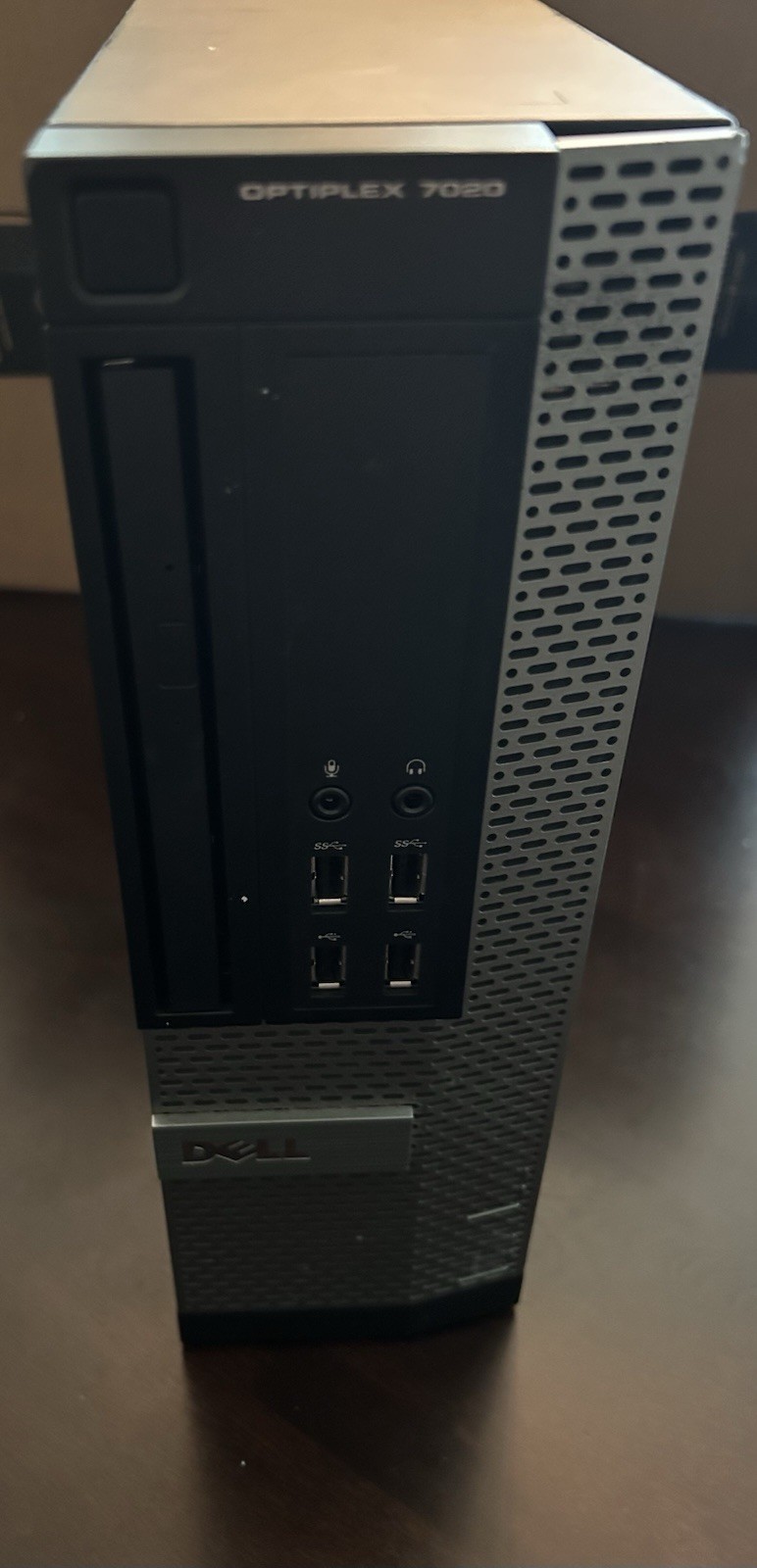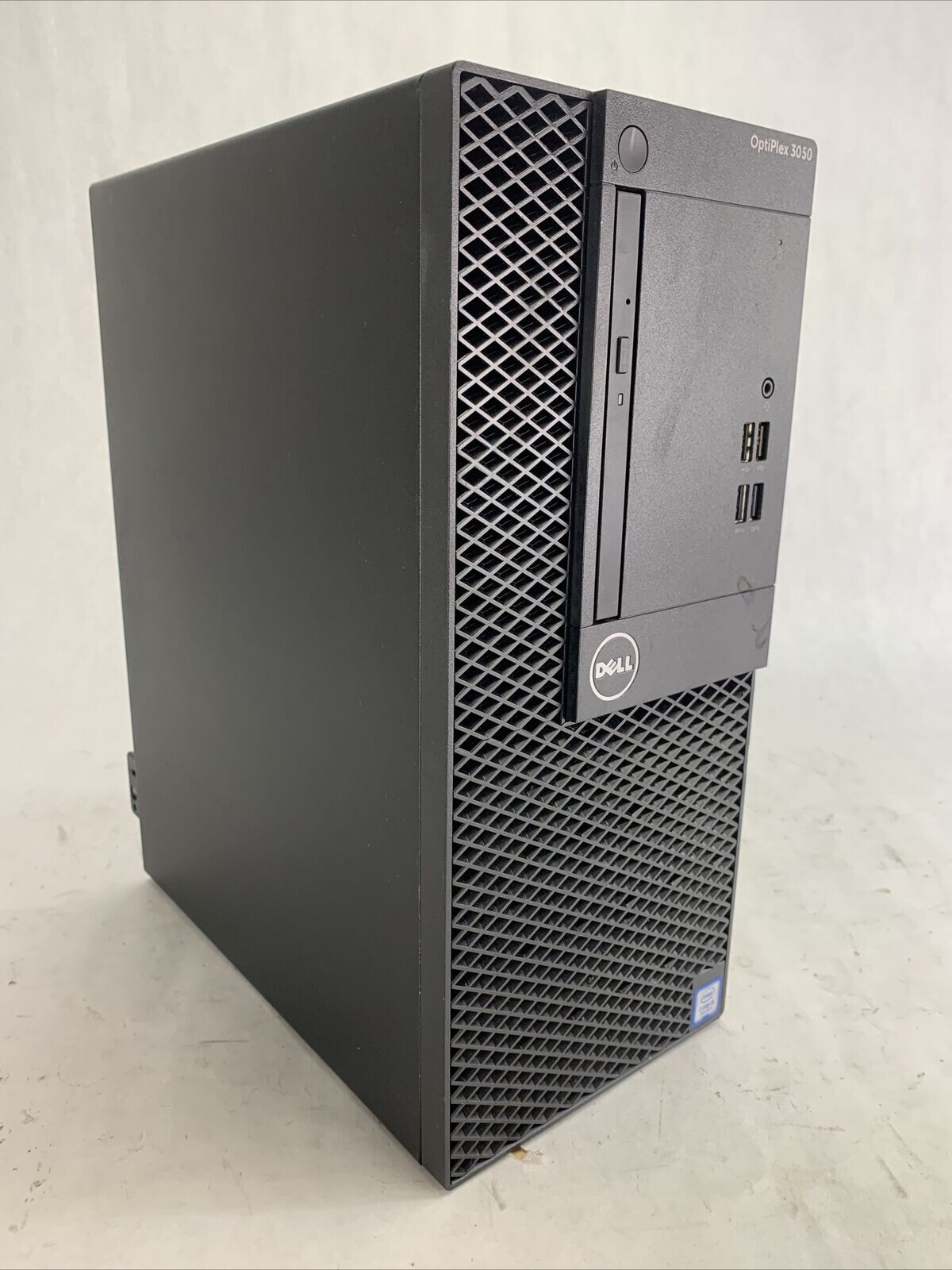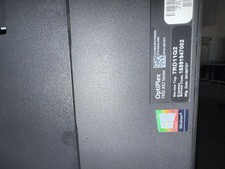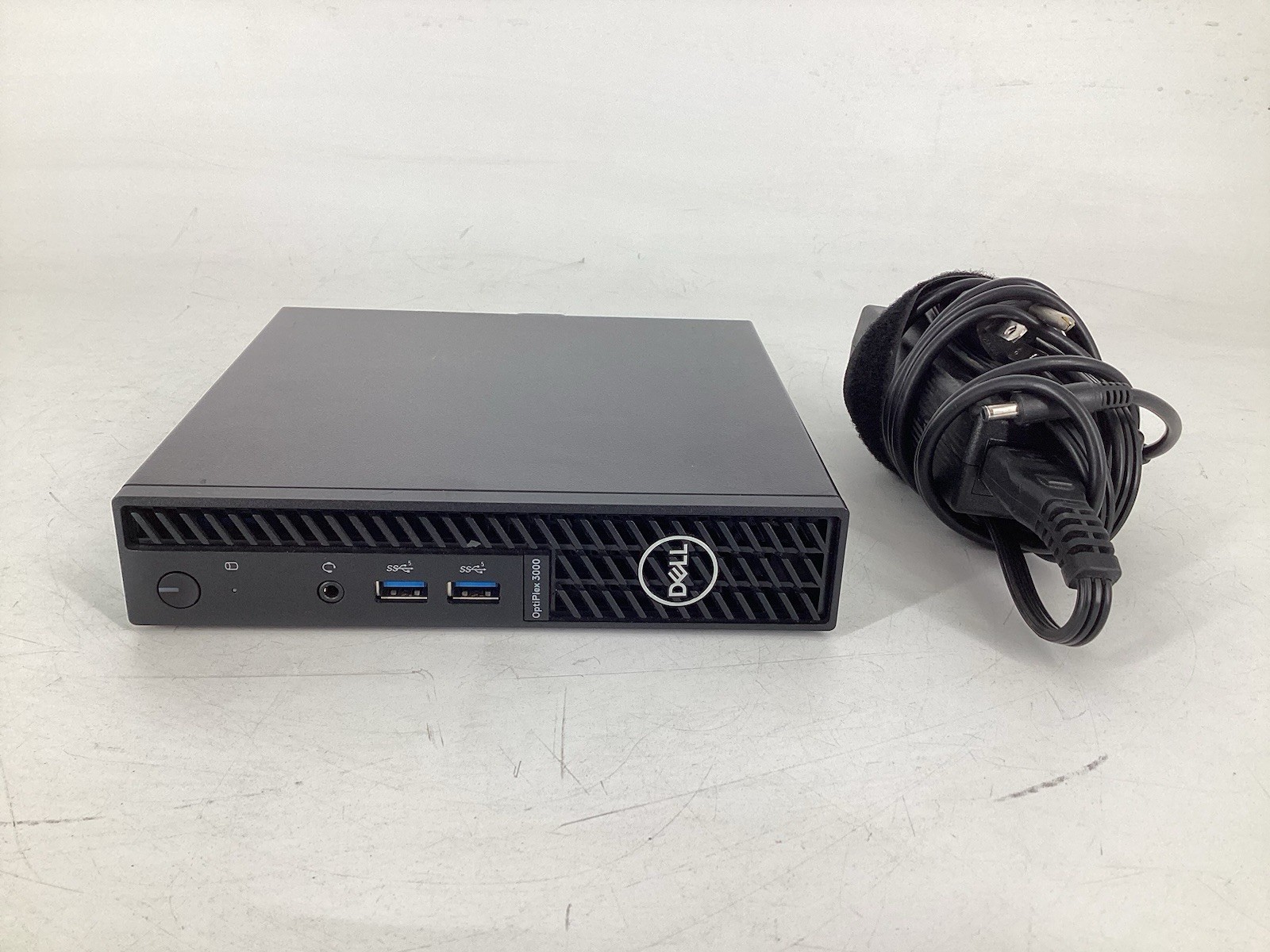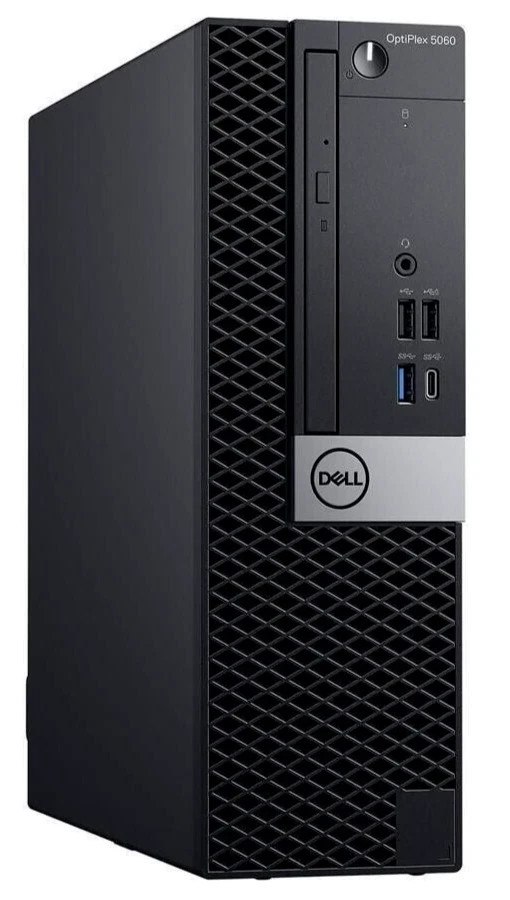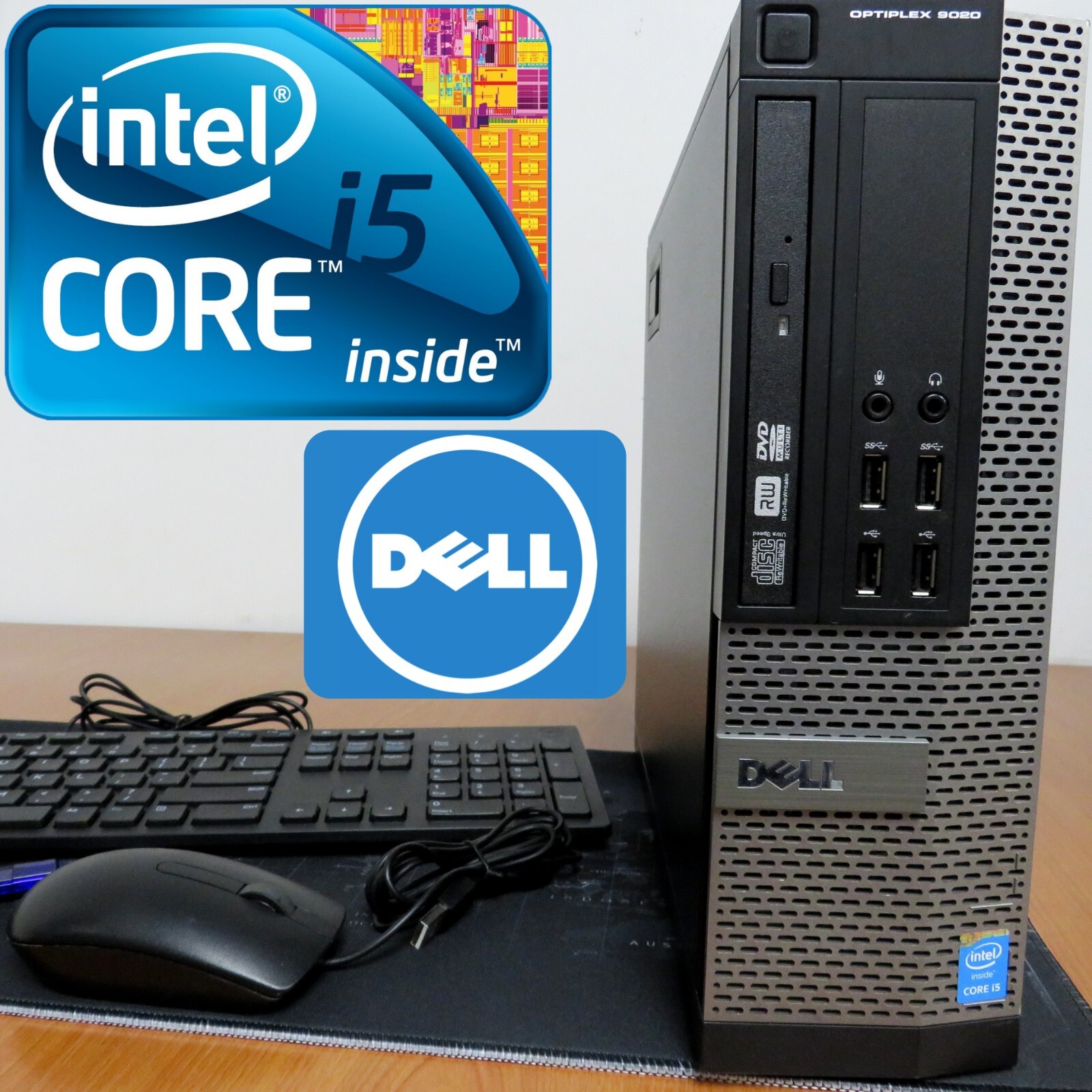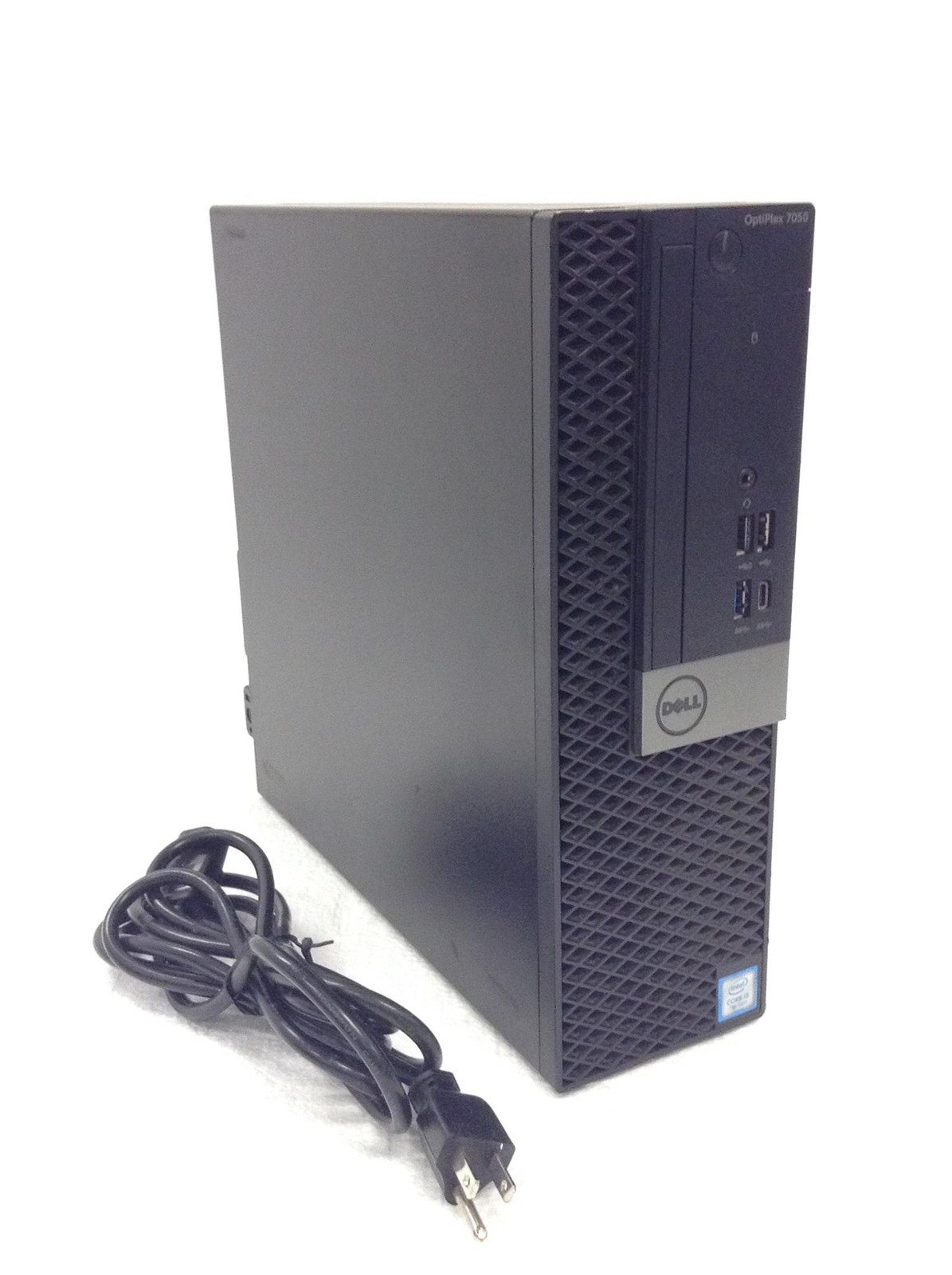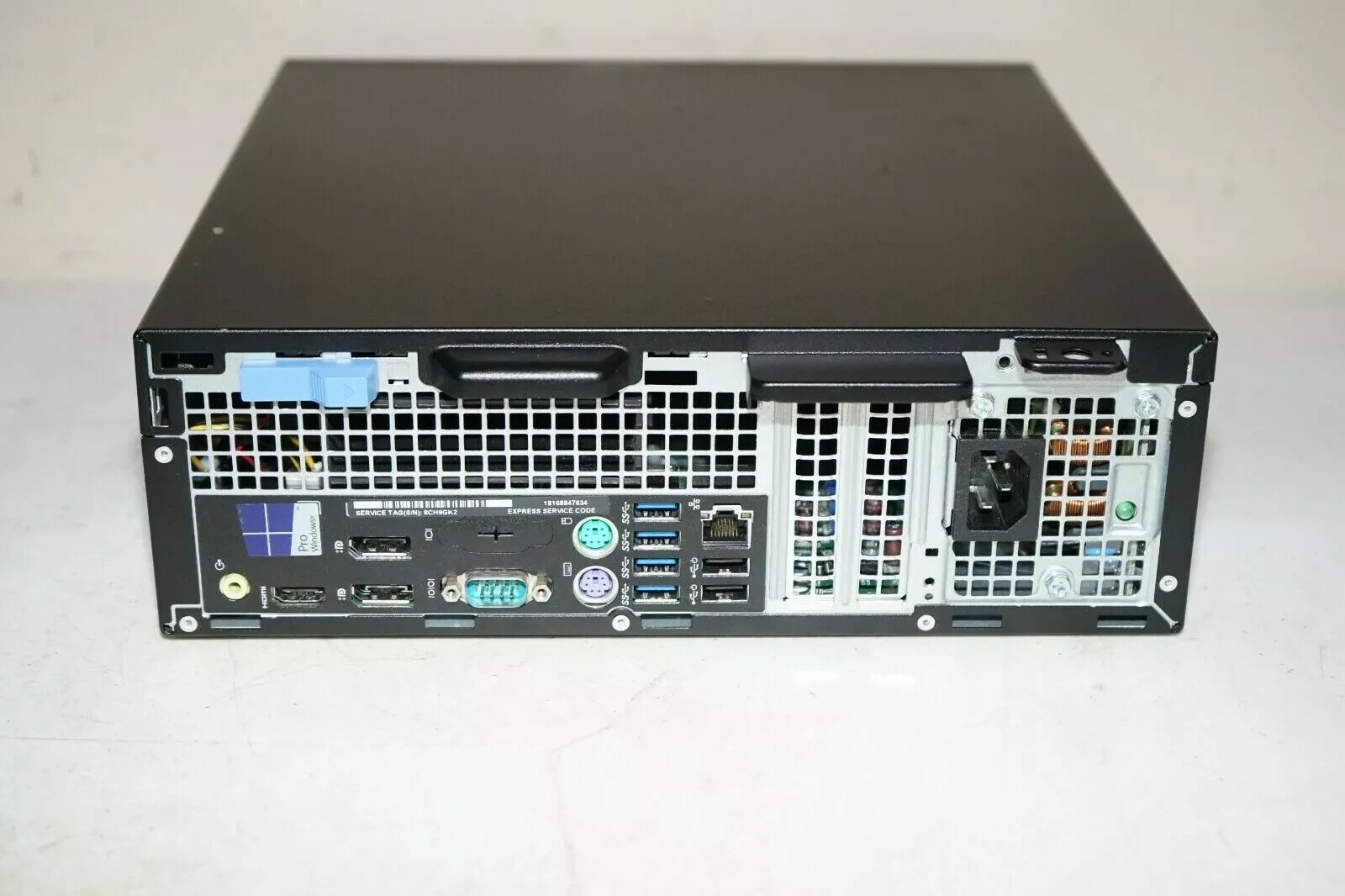| Product Description:
Listing Update…This is not so much an update as it is a brief comment about the computers and related parts I have available for sale. Personal computers (and in particular desktop computers) have always been a hobby of mine. I’ve enjoyed tinkering with this stuff over the years and have accumulated a number of items during this time…some new and some used. I am not an expert on the subject…more of a “do-it-yourself” enthusiast…but I will still try to answer any questions you may have related to my computer listings. Thank you.
Original Listing…
We are replacing some of our Dell OptiPlex computers with newer machines. These are computers that have supported our new-old-stock bicycle shop and we’ve also had a few of them at home over the years. There is nothing wrong with them. We’re just upgrading to some newer computers.
This particular offering includes an Intel 4th generation (Haswell) Core i5 processor. The meaningful component upgrades include 16 GB of Samsung DDR3 RAM, a new ADATA SU630 240 GB solid state drive (SSD) that includes a digitally licensed copy of Windows 10 Professional, a new Seagate Barracuda 1 TB hard drive (HD) and a new TP-LINK dual band (2.4 GHz / 5 GHz) wireless (WiFi) adapter. With respect to the storage upgrades, even basic SSD boot drives (such as this one) represent a significant performance boost relative to traditional hard drives. Additionally, the new hard drive is also noteworthy because many of these used computers will include a used hard drive that may already have “a lot of miles on it”. Finally, the expanded memory (to 16 GB) is also critically important to effectively run Windows (even with a number of tabs opened at the same time). Now these basic office-type machines will never be mistaken for the powerful computers built with today’s newer technology, but at this lower price point (and with the aforementioned sensible upgrades), they are a good value.
Having said all of the above regarding the computer highlights, I thought it might also be helpful if I shared a specifications sheet of sorts that provides more details.
-
CPU: Intel 4th generation Core i5-4590 (4 cores / 4 threads running at 3.3 GHz base / 3.7 GHz turbo for the clock speed and rated at 84 watts for power consumption). I should also mention that I uninstalled the Dell stock cooler to check the thermal paste. Upon noting that it was dry and possibly the original thermal paste applied at the Dell factory, I cleaned it off and applied new thermal paste to ensure proper cooling.
-
Motherboard: Proprietary Dell OptiPlex model with the Intel Q87 Express chipset that comes standard with the Model 9020 computer.
-
Case: Dell OptiPlex small form factor chassis with a black finish. Construction material is mostly steel with a plastic front panel / bezel. Case dimensions (H x W x D) are 11.4″ x 3.7″ x 12.3″.
-
Memory: Samsung branded 16 GB (4 modules x 4 GB of DDR3, PC3-12800 RAM running at 1600 MT/s or MegaTransfers/second). This is not to be confused with the true clock speed of 800 MHz x 2 (because DDR memory performs two operations per cycle). Said another way, MT/s is sometimes labeled as effective MHz, which is why we also see the clock speed of 1600 MT/s referred to as 1600 MHz. Then there is memory timing…measured as 11-11-11-28 for this particular memory kit. These numbers generally describe latency, which is the amount of time between memory operations (including the amount of time it takes for memory to respond to a data request). So in summary, higher clock speed numbers are better (because this tells us how much data our memory can move…send/receive…per second), while lower timing/latency numbers are better (because this generally measures the delay between memory operation).
-
Storage: ADATA SU630 240 GB solid state drive (SSD) with a licensed (digital) copy of Windows 10 Professional installed and a Seagate Barracuda 1 TB GB 3.5″ hard drive (7200 RPM). Note: the SSD and hard drive included with this computer are new.
-
Optical Drive: Hitachi model with DVD / CD read and write capabilities. Note: I also want to point out that Microsoft discontinued its Windows Media Center (including Windows Media Player) application in 2015. Now this application may still be available in some versions of Windows 10, but it does not appear to be as robust of a program for audio and video playback as some other available options. For example, I have a difficult time getting Windows Media Player to playback video files on DVDs (and a quick search of various internet forums indicates that I am not alone). As a result, I have loaded the freeware VLC Media Player software on this computer to fully test this optical drive. To this end, I was able to play both CDs (audio) and DVDs (video) without any problems using this software. As a convenience, I will leave this application installed, so the users of this computer will enjoy the full capabilities of this optical drive.
-
Graphics: Intel HD 4600 integrated graphics, which should be fine if all you want to do is basic Windows tasks, browse the web and stream videos, movies, etc. Regarding the latter, there is always the concern (with older integrated graphics) that modern decoding of videos on sites like YouTube will be a problem (in the sense that playback of videos will not be clear and smooth). As an informal test, I spent some time on YouTube (with this computer) playing videos on a full screen at 1080p detail. I then opened task manager to monitor the integrated graphics usage rates, while also moving my mouse around (on the screen) to further test the integrated graphics. The results of this exercise yielded 30-70% usage rates of the integrated graphics over the span of different videos. So it would seem video playback is fine at 1080p on these integrated graphics, but I don’t think I would push them beyond this resolution.
-
Audio: Integrated on the motherboard (integrated means the sound card is built onto the motherboard).
-
LAN: Integrated Intel I217LM Ethernet LAN chipset w/transfer rate up to 1000 Mbps or 1 Gbps
-
Wireless LAN (aka WiFi): New TP-LINK AC600 Wireless Nano (Dual Band) USB adapter (Model: Archer T2U Nano) that is compatible with 802.11 a/b/g/n/ac technology running at either 2.4 GHz or 5 GHz.
-
Power Supply: Dell branded 255 watt (non-modular)…which is more than enough power for the computer as currently configured.
-
Input/Output ports (front panel): four black USB Type-A (2.0 running at 480 Mb/s), an audio input (microphone) and an audio output (speakers/headphones)…there is also a hard drive LED (white) and an on/off button with a white LED indicator
-
Input/Output ports (rear shield): two PS/2 (mouse and keyboard), three video (VGA and two DisplayPorts), six black USB Type-A (2.0 running at 480 Mb/s), a RJ-45 Network (LAN) with LED indicator, an audio input (microphone) and an audio output (speakers/headphones)
-
Storage ports/sockets: three SATA 3.0 ports (blue, black and white). Note: The SATA 3.0 data transfer rate is stated at 6 Gb/s (750 MB/s), but it’s actually less due to the overhead caused by the 8b/10b SATA encoding scheme. This lowers the actual transfer rate to about 80%, or 4.8 Gb/s (600 MB/s). Then there is the SATA 2.0 stated data transfer rate of 3 Gb/s (375 MB/s), which is also less for the same reasons. So the actual SATA 2.0 transfer rate is 2.4 Gb/s (350 MB/s).
-
Expansion slots: one PCIe 3.0 x16 slot running at x16 lanes and one PCIe 2.0 x1 slot running at x1 lane. The PCIe 3.0 data transfer rate is 8 Gb/s (1 GB/s) per lane and PCIe 2.0 data transfer rate is 4 Gb/s (500 MB/s) per lane. So as it relates to PCIe supported sockets, just multiply the number of lanes available by the applicable PCIe transfer rate and this will give you the theoretical maximum bandwidth for that socket. FYI: PCIe overhead is only about 3% due to an efficient encoding scheme. So PCIe transfer rates are closer to their theoretical maximums relative to SATA transfer rates.
-
Operating system: Windows 10 Professional (64-bit digitally licensed copy that has been updated…see discussion below)
-
Peripherals: Dell branded keyboard and mouse set with an oversized pad that measures 31.5″ x 11.8″. This keyboard and mouse set is used, but I don’t think it was used much, as I don’t see any wear marks on the keys (like I see on my own keyboards that I’ve used a while). As for the oversized pad, the quality is not bad for the money (and a little heavier than I expected).
BIOS Update and Windows Installation…
In an attempt to make the computer as “turn-key” as possible upon receipt, I performed the following tasks. First, I updated the system BIOS to the latest version from the Dell website for this particular computer/motherboard. Next I created a Windows 10 Installation Media flash drive from the Microsoft website (using a 64 GB thumb drive that I will include with this offering). I then installed a digitally licensed copy of Windows 10 Pro and clicked through the Windows prompts with an offline account setup. This approach allowed me to update Windows without entering any personal information. FYI, Windows is likely going to prompt you to create an online Microsoft account, or login to an existing account, once you begin using this computer. In fact, Windows Security (within Windows Settings) considers a Microsoft account, and the benefits that go with it, to be a security enhancement. I suppose opinions may vary as to this claim, but a Microsoft account does have some benefits. One that comes to mind is the free access to 5 GB of Microsoft’s cloud storage (referred to as OneDrive). Stress Testing for Stability…
Finally, I go through a routine that attempts to test the reliability/stability of the computer before I put it to work in our shop or at home (or make it available for sale). This testing attempts to “stress” the computer to bring to light any hardware problems in a timely manner. Now I know there are many approaches to stress testing a computer, and I am not implying my approach is the best, but I take comfort that I likely stress these computers (for brief periods mind you) beyond anything they will probably incur during normal use for their lifetime. I understand this stress testing is more applicable for the new (and higher end) computers I build, because I’ve been using these basic office-type computers for years. So there is already a proven track record of reliability with these computers. Having said this, I still like to test these basic office computers with a “light” version of my stress testing to make sure everything is still functioning properly.
For those that are interested, I load the following freeware programs: 3DMark Demo, CPU-Z, HWMonitor, IntelBurnTest, Prime95, Unigine Heaven and Valley. Some of these programs help to identify and monitor system hardware, while others attempt to stress this hardware. More specifically, here is my approach to stressing this basic office computer to give me some assurances the system is stable. First, I will run the IntelBurnTest at the standard setting as an initial stress test to the CPU/system (and I will run 10 cycles, which does not take very long). I then run the Unigine Heaven program on low detail for around 15 minutes to test the integrated graphics. If I do not identify any problems at this point, I will then re-run the IntelBurnTest at high settings for another 10 cycles (which takes longer). I follow this up with 3DMark Demo and choose the Night Raid (DirectX 12) and Fire Strike (DirectX 11) programs, because they both have a graphics and processor test. Next I will load the newer Unigine benchmarking application, Valley, and run this on low detail for at least another 15 minutes to confirm the graphics components are functioning fine. If I still do not detect any problems (meaning the programs are running okay and system temperatures are reasonable), then I run the Prime95 blender test for maybe a few cycles as a final stress test on the CPU/system. Note…For these lower powered / budget systems, I swap out Unigine Superposition for Valley and 3DMark Time Spy for Night Raid. I do this because I try to “stress” using programs that best match this (budget) hardware being tested.
It’s also worth noting that I monitored system temperatures during stress testing. These temperature readings were taken in an office environment with an ambient temperature of around 21 degrees Celsius (so around 70 degrees Fahrenheit). All of these temperatures were well within factory specs. and likely higher than anything you would experience given the unrealistically heavy load placed on this computer during stress testing.
Follow-up…I am getting some folks that are asking questions about any scores recorded during some of the testing. I don’t know them all, but I do write down a few, and will share them here…
-
Unigine Benchmarks (low detail / two runs):
- 3DMark Demo
- Night Raid (two runs):
- First: 3845 (Graphics: 3711 / Processor: 4837)
- Second: 3841 (Graphics: 3705 / Processor: 4860)
- Fire Strike (two runs):
- First: 765 (Graphics: 817 / Processor: 6609 / Combined: 274)
- Second: 764 (Graphics: 814 / Processor: 6657 / Combined: 275)
Please keep in mind these scores are based on all hardware running at manufacturers’ stock speeds out-of-the-box (so no overclocking). This is my preference for computers that will be relied upon in our small business and for those (like this one) that I make available for sale. Please also understand, I cannot warranty a computer I sell that has been overclocked once it leaves my shop (and please see below for more warranty details). Condition and Packaging…
In terms of condition, I want to confirm (again) this is a used computer that still shows fairly well. The case/chassis has some small scratches, but I don’t believe I see any dents in the case. I can also confirm the front bezel is in good shape and all the small rubber feet are still intact. I’ve also taken the time to clean/dust the inside of the computer, so it really should be ready to power up (upon receipt). I don’t have the original packaging/box for this computer, but we will still take time to re-package this computer for safe transit. We will also purchase online tracking, full insurance coverage and signature confirmation service with all computer sales to protect both of us in the unlikely event there is a shipping problem. I know the additional packaging and shipping services cost a little more money (and we won’t charge for these extra packaging/service costs in our shipping fee), but we like the peace of mind knowing we are doing our absolute best to protect the computer.
Support and Warranty Information…
As alluded to above, this computer is similar (in terms of the parts and specs.) to those that support (or have supported) our bicycle parts business, as well as those we have at home. So I expect them to function for years, and hopefully until they age to the point where they need to be upgraded or replaced. Now I cannot warranty a computer for years (especially a used one). Although, I still want to make sure you have a properly functioning used computer upon receipt. So I’ll offer a 30 day warranty period from the date of purchase against any hardware defects. All I ask in return is that you exercise reasonable care in using this computer, and this includes no overclocking, as this will void any warranty.
Unfortunately, I cannot warranty software. I have included a Windows 10 Installation Media flash drive that you may use to reinstall Windows in the event you run into software problems that require a reset or clean install of the operating system. I can also try to help with the reloading of any drivers that I may have installed during my original Windows setup (prior to selling/shipping the computer). If you have any other questions related to this re-installation process, I will do my best to help. Although, questions related to other software you may load onto the computer are likely beyond my level of expertise (just trying to be honest here) and should be directed at the applicable software vendor.
You may visit our store by clicking on this “Store Home Page” link.
Note to domestic customers regarding oversized package shipping…
For domestic packages, FedEx Ground or FedEx Home Delivery Service generally offers the lowest ground shipping rate for oversized packages in the continental US (i.e., the “Lower 48”). My domestic shipping costs to Alaska, Hawaii and the US Territories are much higher. It’s also worth noting if cost is not as much of an issue (or if you prefer US Postal Services “USPS” over FedEx), then USPS Priority Mail service is generally the most timely of the domestic shipping options.
Note to international customers regarding oversized package shipping…
International shipping requirements vary for larger packages (including size limitations from country to country). As a result, international customers should contact us before purchasing larger items. We are then able to research shipping options to determine if we are able to ship a particular oversized item to your country and then provide an accurate shipping quote. This way we will avoid any confusion or misunderstanding with respect to international shipping of oversized packages.
Note to international customers regarding customs…
We also apologize to those that feel their country import taxes, duties and brokerage fees are excessive. As a small US business, we are required by customs’ laws to declare each order as a retail sale. Additionally, the declared order value must be equal to total store purchases and/or winning auction bids (less any shipping costs, as these are not considered in the declared value). As a result, each customer will be responsible for paying his/her own country taxes, duties and brokerage fees, which will be collected upon delivery. Again, we apologize for these additional costs, but we cannot afford the penalties and fines that come with breaking customs’ laws…so we have to strictly abide by them.
|








